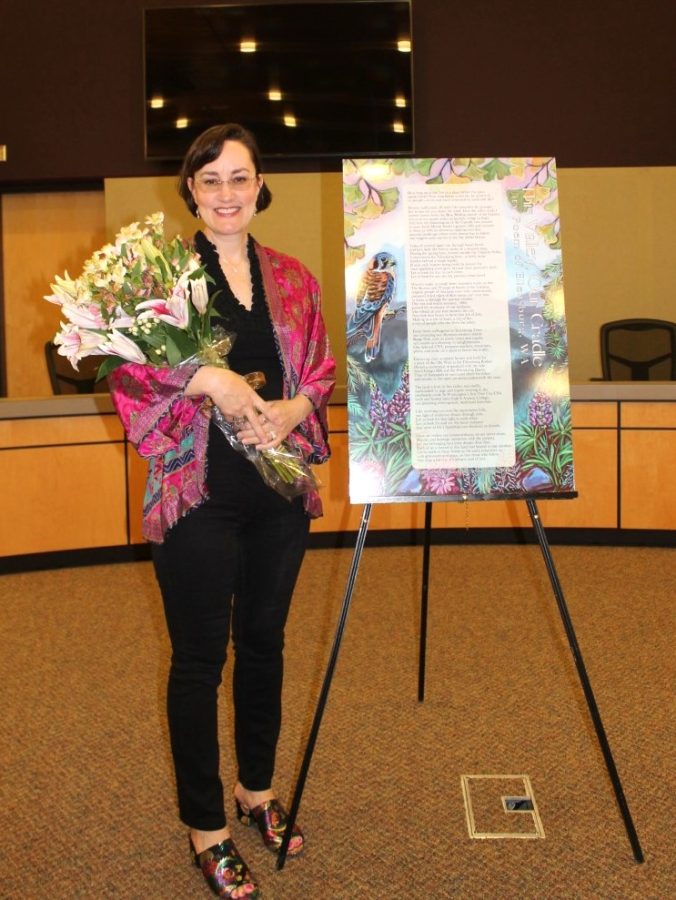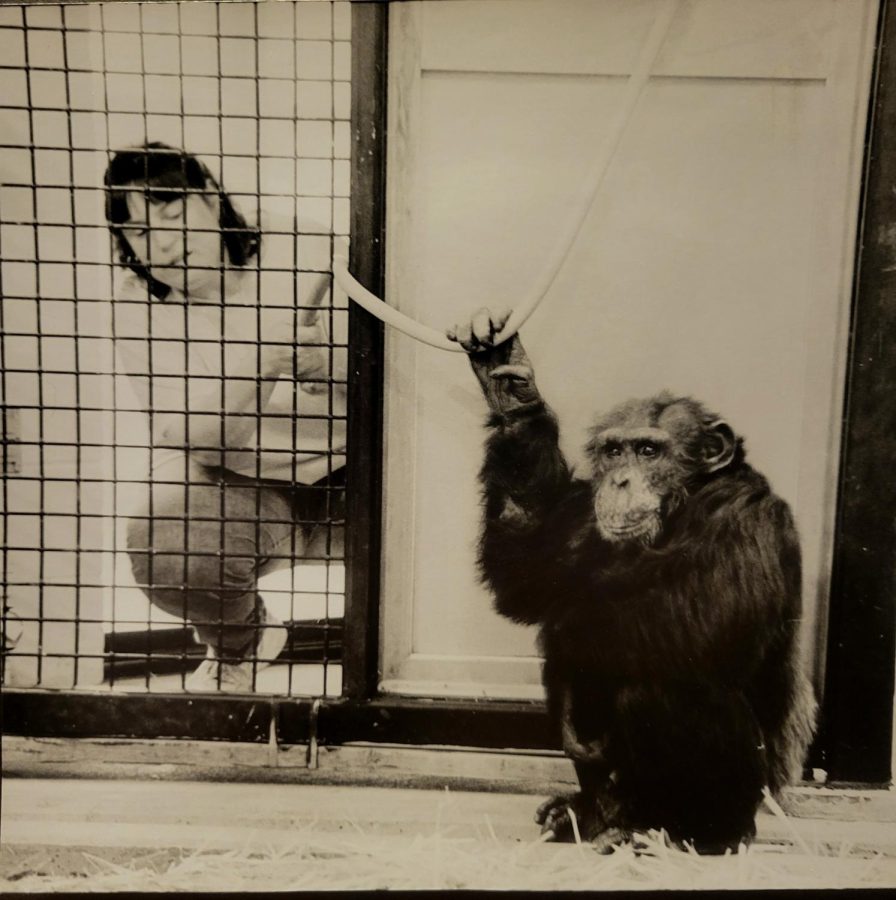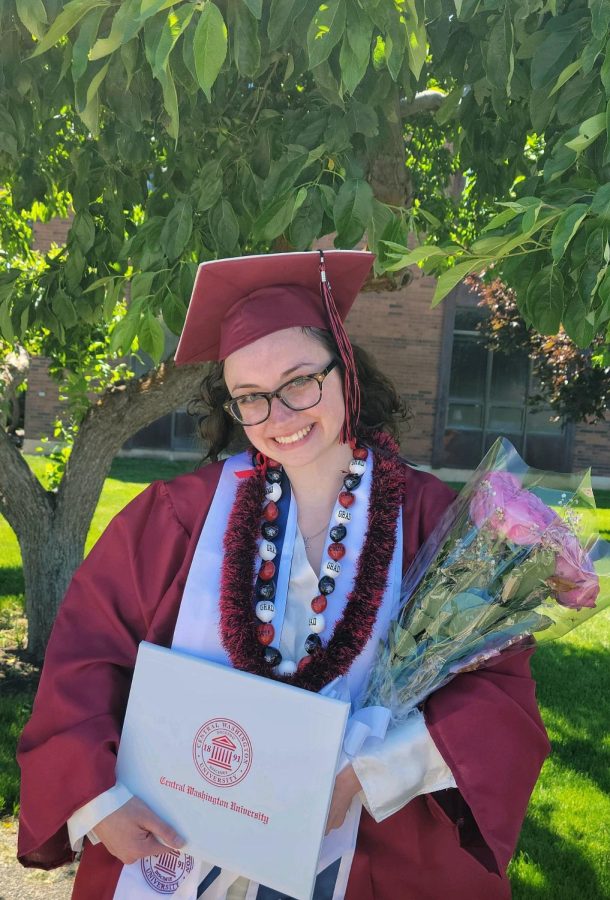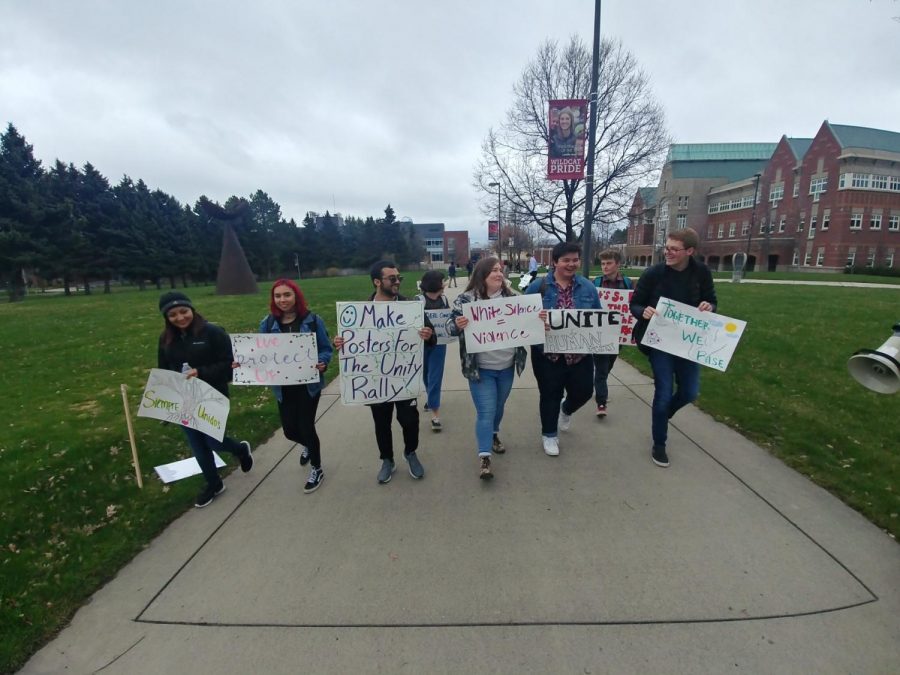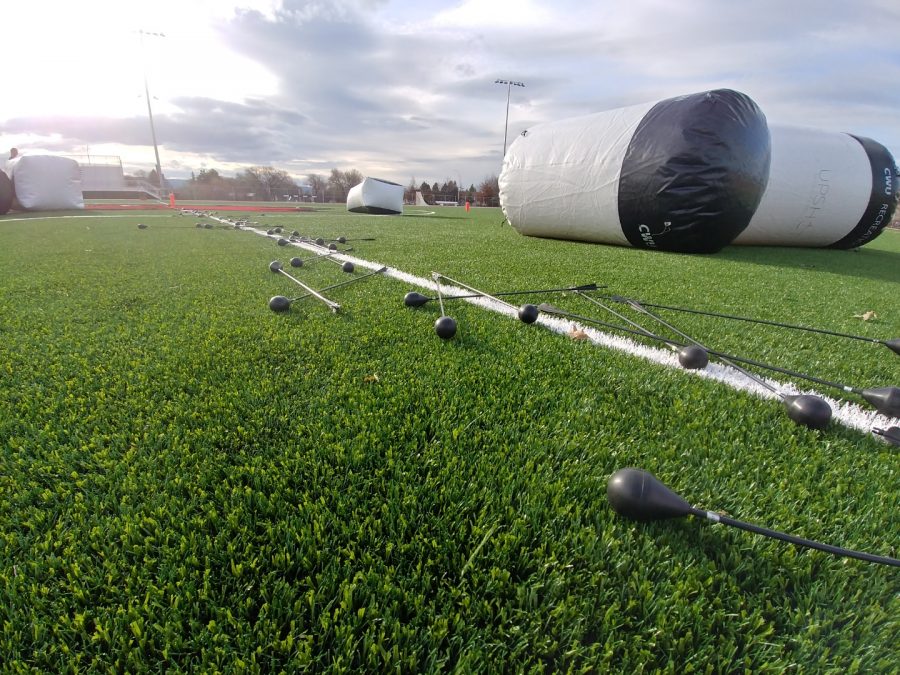LANDAN GARCIA, copy desk chief
With the death of Dar last November, the chimps at Central have been a little lonelier than usual.
Staff at the Chimpanzee and Human Comminication Institute have expressed concerns about the social well-being of the two chimps only having each other.
By chimpanzee standards, Central’s two remaining chimps, Tatu, 37, and Loulis, 34, could be considered elderly. According to Bonnie Hendrickson, associate director for CHCI, the typical age of death for chimpanzees in captivity is 31.
Those two issues have prompted the university to decide whether to remodel CHCI and add new chimps or scale it back by sending the chimps elsewhere.
Kirk Johnson, dean of the College of the Sciences at Central, has been outlining pros and cons to various campus groups before making his recommendation to the president’s cabinet next Wednesday.
Central is one of only two universities in the world with chimpanzee behavioral program on campus, the other being Oxford Brookes University in the United Kingdom. This has drawn out-of-state and international visitors to Ellensburg, which has raised concern amongst the community.
“Most of my students are from out of state,” said Mary Jensvold, director of CHCI and associate professor of anthropology.
During a City Council meeting last Monday, the City of Ellensburg decided to write a letter supporting renovating CHCI to CWU President James Gaudino for its contribution to the local economy.
Moving them to another sanctuary has its own set of problems, however; chimpanzees are territorial and will fight for social dominance, and with the advanced age of Tatu and Loulis, social integration could prove difficult.
According to a letter from Hendrickson to Faculty Senate, “As the new chimpanzees, they will be at a great disadvantage being elderly and on the low end of the totem pole.”
Her letter addressed concerns about putting the elderly chimps under anesthesia, about complications with transportation to a new facility and about the extended holding period required before integrating them to a new community.
She also addressed the issue of the chimps being sent to another institution tarnishing the image of Central, as many sanctuaries are already at capacity.
“There are many, many chimps in need of sanctuary that the federal government is retiring,” Jensvold said.
One potential solution Hendrickson’s letter proposed would be for CHCI to adopt three new chimps under the age of 8, for whom Tatu and Loulis could provide “much needed adult chimpanzee guidance.” She cited hundreds of “warehoused” chimpanzees in need of a sanctuary that Central could adopt, formerly used in the entertainment industry or in biomedical research and with limited ability to survive if reintroduced into the wild.
There are no guarantees of a successful assimilation, however. According to a Johnson’s presentation, “parallel facilities and long-term investment” would be required for separate chimpanzee communities to slowly integrate with each other.
Student Academic Senate recently voted against writing a letter of support for necessary renovations to CHCI. They stated concerns about additional funding being needed to create a space for a separate chimpanzee population, were an unsuccessful assimilation to occur.
SAS also questioned the usefulness of the program as a whole. Some students questioned whether the teaching of American Sign Language from one chimpanzee to another, one of the original research goals of CHCI, is “research worth repeating.” There were also uncertainties regarding the nature and usefulness of the current “observational research” being conducted at the center.
“There has been a huge shift in what’s seen as the ethical treatment of research animals,” said Linda Schactler, director of public affairs at Central.
According to Jensvold, the National Institute of Health (NIH) is increasingly against invasive biomedical research on animals, which she says does not take place at CHCI in any form.
“The model we’ve been doing for the last 20-to-25 years is the research they’re calling for,” Jensvold said. “We can help so many other chimps and learn so much about other chimps by continuing this program.”
Julia Reveles, a graduate student and the creator of Primate Awareness Network (PAN) on campus, said the research the students do is focused on creating the best caregiving techniques.
“Our interest is not experimenting on them or anything, that is completely against what we do here,” she said.
Class sessions for primate studies students are typically comprised of 30 minutes of class time, 20 minutes of observation and 10 minutes of Q&A. Jensvold described the mission of CHCI as threefold—provide sanctuary, research and education. She describes the research as active. Graduate students recently returned from the Northwest Anthropological Association in Portland, where they presented three projects.
Some of the research at CHCI focuses on night behavior of chimps and how to provide better enrichment in captivity.
“They’re doing research and they’re also doing husbandry,” Jensvold said. “They’re learning how to do non-invasive research by using chimpanzees.”
According to Schactler, Central plans to continue the major and chimposiums with or without the chimpanzees on campus. Over the last 20 years, primate footage from CHCI has been archived for future research, which could be used as classroom and possibly visitor content.
Many of the primate studies students are afraid the program and CHCI will dissolve if the chimps leave.
“None of us are here to watch video data,” said Kaely Sullins, a graduate student in primate studies. “You could stay at home and do that.”
Jensvold expressed concerns with this idea as well.
“We get 6,000 visitors a year. I don’t know if they’d want to come if we didn’t have chimps in the building,” Jensvold said. “April, May, and June we have elementary school students coming for almost every single day, and many days it’s more than one visit.”
The facility is state-owned, but the chimps are owned by Friends of Washoe, a non-profit organization who also provides food, enrichment, and some financial support for the program.
“Perhaps by the end of April, maybe May, they will have to make a decision regarding what to do with the facility,” Schactler said.
Another issue addressed in Johnson’s presentation was “limited or non-existent direct academic and career trajectories for [primate studies] program graduates.” Reveles disagreed with this, listing several graduates have traveled to other sanctuaries and zoos to teach care giving techniques they learned at Central.
“It’s more of a calling than a job,” Sullins said. “You go in with the understanding that you’re going to sacrifice a lot, and you’re OK with it.”
Two options of where Central could move the chimps include the Cle Elum sanctuary, which currently employs three Central primate studies graduates, or another sanctuary in Canada, which employs a student who completed Central’s two-week primate outreach program.
Student internships with the chimps via PRIM 220, a 2-credit course open to all majors, would be discontinued.
“If Central doesn’t redo the building, then we’ll have to go with Plan B,” Jensvold said. “We would be part of the problem, rather than being part of the solution. If we kept chimps here, we’d be part of the solution.”
The state capital budget includes $1.9 million to renovate the building for 2013-15, would be coming from capital funds from the state, which are separate from operating costs. Capital money is used for the construction of new buildings and for renovating buildings on campus.
“The university has already invested funds into the building, so I kind of thought that’s the path we were taking,” Jensvold said. “The university brought in a consultant two years ago and we talked about all this.”
No new public meetings are currently on the agenda about the issue.
“Anybody who’s wanted to meet, Kirk has met with them,” Schactler said.
Jensvold feels that the student population may have more to say about the issue, however.
“They haven’t done an open, public forum for students to voice their opinion,” Jensvold said.
Johnson will present his recommendations on April 10 regarding budget information, what it would take to revise the facility, and student feedback.
“Every time you talk to somebody, there is another option,” Schactler said. “Once they’re here, you can’t take them back—it’s not like going to the grocery store.”
Schactler encouraged public comments to be directed toward Kirk Johnson at [email protected] or Schactler at [email protected] by April 10.










